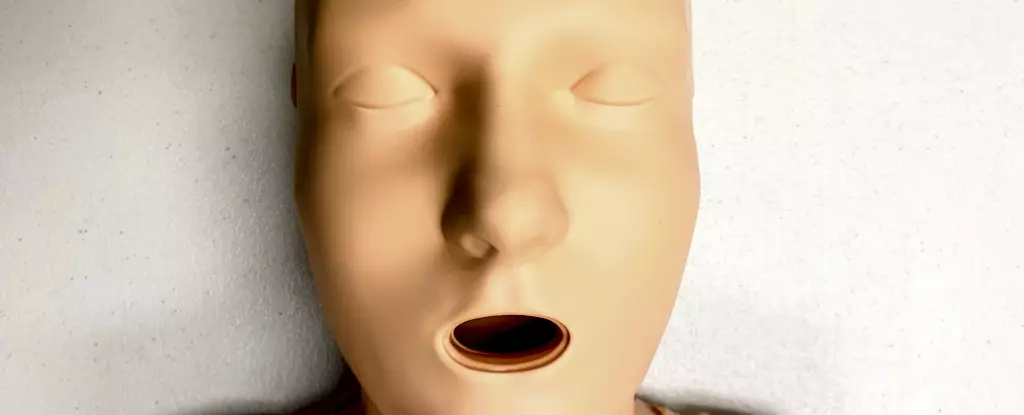Cardiopulmonary resuscitation (CPR) is a critical life-saving technique that can significantly enhance the survival chances of individuals experiencing cardiac arrest. When the heart fails to beat effectively, the rapid delivery of CPR ensures that blood continues to circulate, supplying vital oxygen to the brain and other organs until professional medical assistance can reach the scene. However, recent studies have revealed a troubling trend: bystanders often hesitate to administer CPR when the victim is a woman. This discrepancy raises serious questions about societal attitudes toward gender and health, and what can be done to bridge this alarming divide.
An Australian study conducted from 2017 to 2019 analyzed nearly 4,500 cases of cardiac arrest. The findings were striking: bystanders were 74% more likely to perform CPR on men compared to just 65% for women. This disparity suggests that there may be underlying factors affecting people’s willingness to intervene in emergencies based on the victim’s gender. To understand the breadth of this issue, it’s essential to delve into how CPR training resources may inadvertently contribute to this problem.
One critical area of concern highlighted by researchers is the design of training manikins used for CPR education. A recent analysis discovered that an overwhelming 95% of CPR training manikins are flat-chested, and only a minority have the anatomical features typical of women. This absence of realistic female representations in training resources could foster a sense of discomfort or hesitation among potential rescuers. While CPR technique is essentially the same regardless of body type or anatomical differences, the way training materials are presented could shape perceptions and attitudes toward performing CPR in real-life situations.
Lack of familiarity with female anatomy during training may exacerbate fears of awkwardness or even accusations of impropriety when performing life-saving techniques on women. Thus, training scenarios that do not account for gender diversity ultimately undermine confidence in bystanders when confronting actual emergencies.
The implications of this gender gap extend beyond just CPR statistics; cardiovascular health itself is a significant issue for women globally. Heart disease remains the leading cause of death for women, yet there is a concerning trend where women are less likely to receive timely CPR or defibrillation if they experience cardiac arrest outside a hospital. The disparity presents a troubling intersection of gender and health, exacerbated by broader societal biases that often result in medical symptoms in women being dismissed or misdiagnosed.
Research further indicates that women suffering a cardiac arrest are not only less likely to receive urgent help, but they also face higher mortality rates and are more prone to suffer lasting brain damage as a result. This health inequity underscores the urgency of reforming CPR training practices to ensure inclusivity and preparedness for all individuals, regardless of gender.
The stark lack of representation among training materials is distressing. In examining manikins available worldwide, it becomes evident that diversity is sorely lacking: 94% of CPR training manikins are male, and 88% are white. With such a disproportionate focus on a narrow demographic in training resources, it is vital to advocate for the inclusion of more diverse manikins to represent different body types and skin tones accurately.
This representation is not merely a matter of inclusivity; it directly impacts the efficacy of training. If potential rescuers perceive that CPR is predominantly intended for a certain demographic, they may be less inclined to act when faced with emergencies involving women or individuals who do not fit that mold.
Effective CPR training must equip people to recognize the symptoms of cardiac arrest, irrespective of the victim’s gender. Crucial elements of CPR, such as hand placement and compression rates, remain constant across all genders. Therefore, there is an overwhelming need for educational campaigns and training resources that emphasize the need for prompt action in emergencies.
People need to be educated on the signs of cardiac arrest — such as unresponsiveness or irregular breathing — and trained to perform CPR without hesitation. Even though there might be discomfort associated with touching someone of the opposite sex, it is essential to prioritize the life of the victim above societal fears. In cases where a defibrillator is needed, awareness of how to manage clothing like bras can prevent unnecessary delays in care.
To mitigate the gender disparities in CPR application and outcomes, it is crucial to implement structural changes in training practices. Developing a broader range of CPR training resources that include female representation, as well as various body types and skin tones, can empower bystanders to offer assistance more readily. Furthermore, robust educational initiatives focusing on women’s cardiovascular health are necessary to ensure that everyone understands the risks and signs associated with heart conditions.
In short, saving a life should never be constrained by gender biases or inadequate training resources. With the right reform, we can build a society where quick and effective response to cardiac emergencies becomes the norm, for all individuals, regardless of gender.


Leave a Reply